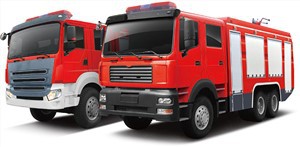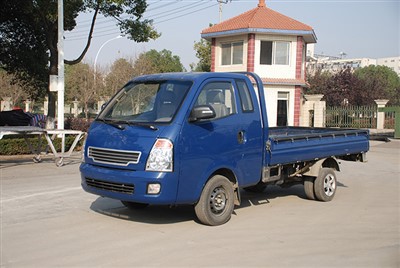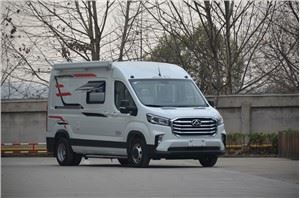Heil Garbage Truck: The Ultimate Guide to Waste Collection Excellence
Introduction
The Heil garbage truck has long been a staple in the waste management industry, recognized for its innovative designs and efficient features. Established in 1901, Heil has consistently pushed the envelope when it comes to creating robust vehicles for solid waste collection. This article delves into the various aspects of Heil garbage trucks, from their historical legacy to the latest technology advances that make them a top choice for municipalities and private waste haulers alike.
History of Heil Garbage Trucks
Foundation and Early Innovations

Heil was founded over a century ago by an ambitious entrepreneur, Albert Heil. The company’s initial focus was on creating innovative refuse collection systems, paving the way for what the industry is today. In the early 1900s, Heil introduced the first hydraulic garbage trucks, revolutionizing how waste was collected.
Major Breakthroughs in the 20th Century
Throughout the 20th century, Heil made several significant advancements, such as:
- Introduction of automated mechanisms for loading and compacting waste.
- Implementation of safety features to protect operators and pedestrians.
- Development of specialized models tailored for various commercial needs.
Partnerships and Influence
Heil formed strategic partnerships with municipalities to enhance efficiency in waste management. As cities expanded, so did the demand for more specialized waste collection vehicles.
Types of Heil Garbage Trucks
Rear Loader Trucks
Heil rear loader trucks are designed for efficient, high-capacity collection. Features include:
- Large storage compartments for extended routes.
- Automatic packer mechanisms for optimal compaction.
**Example:** The Heil Routeman series is a popular choice for both urban and suburban collections, providing reliable performance and durability.
Front Loader Trucks
Front loader garbage trucks are ideal for commercial applications. Key characteristics include:
- Heavy-duty arms for lifting dumpsters.
- Variable compacting options for diverse waste types.
**Example:** The Heil Liner is designed specifically for large shopping complexes and industrial sites.
Side Loader Trucks
For areas with narrow streets, side loader garbage trucks offer the perfect solution. Their design allows for:
- Efficient collection from both sides of the vehicle.
- Reduced manpower, thanks to automation features.
**Example:** The Heil Sidewinder model facilitates quick curb-side collection, making it a favorite for city streets.
Innovations in Heil Garbage Trucks
Environmental Initiatives
Heil is committed to creating eco-friendly garbage trucks that minimize pollution. Their recent models include:
- Low-emission engines that meet strict regulatory standards.
- Electric-powered models that significantly reduce fuel consumption.
**Example:** The Heil e-Collect is an electric garbage truck designed for efficient urban waste collection.

Smart Technology Features
Modern Heil garbage trucks come equipped with smart technology, including:
- Telematics systems for real-time tracking and diagnostics.
- Automated route optimization software.
**Tip:** Utilizing telematics can enhance the overall efficiency of waste collection routes, leading to reduced operational costs.
Maintenance of Heil Garbage Trucks
Regular Check-ups
Routine maintenance is crucial for the long-term performance of Heil garbage trucks. Recommended practices include:
- Regular oil and fluid changes.
- Inspection of hydraulic systems and lines.
Common Repairs and Issues
While Heil trucks are known for their durability, some common issues may arise:
- Wear and tear in hydraulic components.
- Electrical system failures.
**Tip:** Establish a proactive maintenance schedule to address issues before they escalate.
Cost Considerations for Heil Garbage Trucks
Initial Purchase Price
The cost of acquiring a Heil garbage truck varies based on several factors:
- Type of truck (rear, front, or side loader).
- Custom features tailored to specific needs.
Prices typically range from $100,000 to $300,000, depending on specifications.
Operational Costs
Beyond the initial purchase price, consider the ongoing operational costs:
- Fuel expenses.
- Routine maintenance and repairs.
**Example:** Transitioning to electric models can lower fuel costs significantly.
Choosing the Right Heil Garbage Truck for Your Needs
Analyzing Your Waste Management Requirements
Consider these factors when choosing a Heil garbage truck:
- Volume and type of waste to be collected.
- Size of the area where the truck will operate.
Consulting with Experts
Leverage expert advice or consult with a licensed dealer to match your needs with the right truck model. They can offer valuable insights and recommendations based on industry Best Practices.
FAQs about Heil Garbage Trucks
1. How long do Heil garbage trucks typically last?

With proper maintenance, Heil garbage trucks can last anywhere from 10-15 years, depending on usage and care.
2. Are Heil trucks environmentally friendly?
Yes, Heil offers various eco-friendly options, including models with low-emission engines and electric-powered vehicles.
3. What is the average fuel economy of a Heil garbage truck?
Fuel economy varies by model, but many trucks average between 5-7 miles per gallon, with electric models significantly reducing fuel costs.
4. Can you customize Heil garbage trucks?
Absolutely! Heil trucks can be customized with various features tailored to specific waste management needs, including lift mechanisms and bodies designed for different waste types.
5. What maintenance is required for Heil garbage trucks?
Regular oil changes, hydraulic system inspections, and electrical system checks are integral to ensuring the truck remains operational and efficient.
6. Where can I buy Heil garbage trucks?
You can purchase Heil garbage trucks from authorized dealers or directly from Heil’s official website. They can also assist with financing options and customizations.
